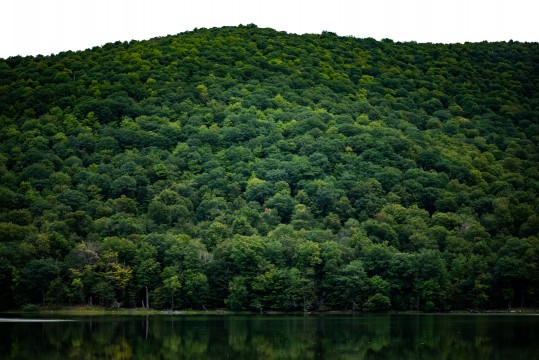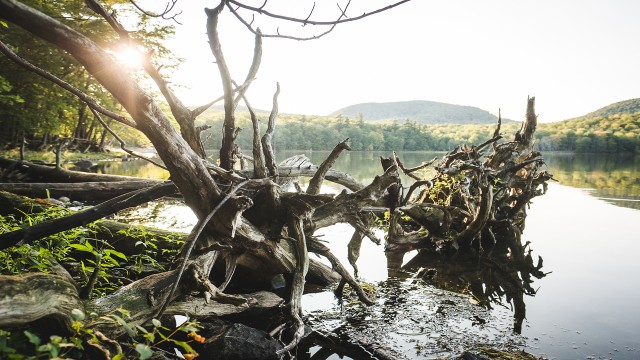Visitors sometimes wonder why the forest at Mont St. Hilaire has so much debris on the forest floor and so many dead or dying trees. Forests managed for the production of timber or maple syrup often create conditions that are much more open in the woods. Still today, for many people in Quebec and in many European countries where forests have been intensively managed since medieval times, a clean and orderly forest is one in which there are no dead branches, shrubs or young trees in the underbrush. The important thing to realize about the forest in the Gault Nature Reserve is that it is unmanaged and this is done on purpose!
We are purposely letting nature take her course, as the great forests did in this region before the Europeans arrived. Obviously, trees in a forest do not require human intervention — they did just fine for many millennia before any foresters arrived in Quebec. In this region there are very, very few remnants of such old-growth forests that have not been managed by people for one reason or another. These remnants of “old-growth” forests provide invaluable scientific benchmarks against which the far more frequent, “second-growth” forests can be compared. Some plants and animals are found only in old-growth forests. We now know that it may take centuries for the flora and fauna of harvested forests to return to old-growth conditions even if exploitation or management were to stop.
So what we have in the Gault Nature Reserve at Mont St. Hilaire is a precious remnant of old-growth forest. It is at the very northern limit of the deciduous forests that stretch south to the Gulf of Mexico and west to the Mississippi River. It is this old-growth character that contributes to the special value of the reserve for teaching and research, and also what sets it apart from the more disturbed forests on the other Monteregian Hills and in the surrounding St. Lawrence Valley.
Recommended readings
Bonnicksen, Thomas M. 2000. America's Ancient Forests. From the Ice Age to the Age of Discovery. NY: Wiley.

